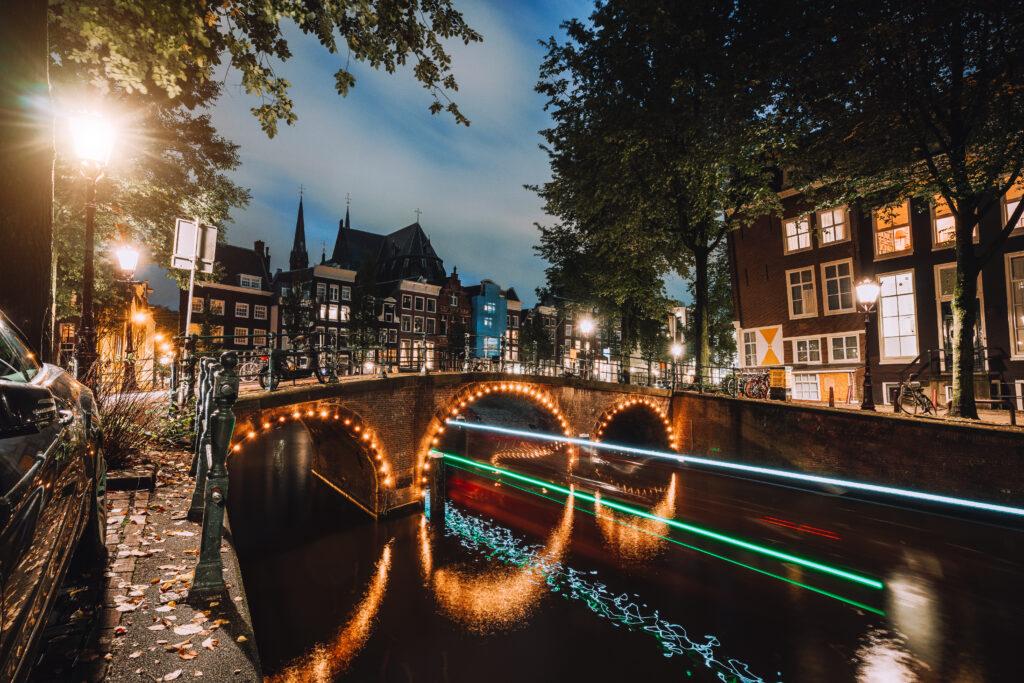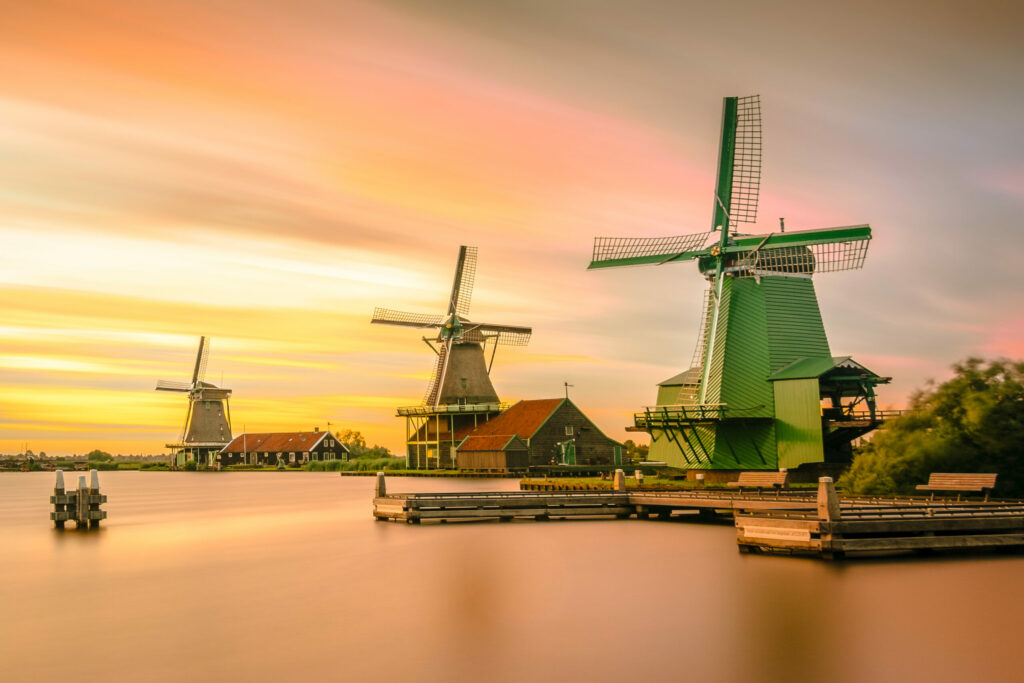The history of Amsterdam’s canals
The canals of Amsterdam, or “grachtengordel”, were built in the 17th century during the Dutch Golden Age. At that time, the city experienced rapid expansion due to its central role in global trade. The canals were designed to organize urban growth while facilitating the transport of goods and water management. This canal network, stretching over 100 kilometers, allowed Amsterdam to develop while maintaining easy access to nearby rivers and seas.
The design of the canals
The city plan was strategically designed to respond to demographic and commercial growth. The canals follow a semi-circular shape, with three main ones: the Prinsengracht, the Herengracht, and the Keizersgracht. This layout is an outstanding example of 17th-century hydraulic engineering and urban planning. The canals are lined with narrow, tall houses that were once occupied by merchants and the bourgeoisie.
The importance of canals for trade
The canals were essential to the trade and prosperity of Amsterdam. At the time, the city was one of the world’s leading commercial hubs, particularly thanks to the Dutch East India Company (VOC). The canals enabled the transport of goods such as spices, textiles, and precious materials from the colonies. In addition to facilitating trade, the canals helped strengthen Amsterdam’s economic power on the international stage.
Unique architecture along the canals
The houses along the canals are another fascinating aspect of the city’s history. Known as “canal houses”, they are famous for their distinctive style, with narrow facades and pointed gables. Many buildings are decorated with sculptures and architectural details that reflect the wealth of the merchants who lived there. Some even feature hooks at the top of the facades, used to lift and transport heavy goods to the upper floors.
Amsterdam’s bridges and their history
The bridges that connect the canals add another layer to the historical charm of the city. Some of these bridges, such as the famous “Magere Brug” (Skinny Bridge), date back centuries and are considered symbols of Amsterdam’s history. Built mainly of wood or stone, the bridges were designed to link the city’s districts while allowing boats to pass freely along the canals.
The impact of canals on daily life
Beyond their commercial role, the canals also shaped the daily lives of Amsterdam’s residents. Over the centuries, locals learned to use them for personal needs, from traveling by boat to enjoying leisure activities. Even today, the canals are used for boat rides, tourist cruises, and events such as King’s Day celebrations.
The role of canals in water management
The canals were not only built for navigation and urban planning. They also play a crucial role in water management. Since Amsterdam lies below sea level, the canals were designed to regulate water levels and protect the city from flooding. This complex system of canals and dikes allowed the city to thrive despite its challenging geographic situation.
Visiting Amsterdam’s canals today
Today, visiting the canals of Amsterdam is an absolute must for anyone who wants to experience the city’s history and culture. You can take a canal cruise to explore the different neighborhoods or simply stroll along the banks to admire the historic houses and iconic bridges. There are also museums, such as the Canal Museum, that recount the history of these waterways and their importance to the city’s development.
Conclusion
Amsterdam’s canals are far more than just waterways. They are a living testimony of the city’s history, from its flourishing trade in the 17th century to its current role as a cultural and tourist hub. For history enthusiasts, a visit to the canals of Amsterdam is a unique opportunity to dive into the city’s fascinating past while discovering its architectural heritage and way of life. Don’t miss this experience on your next trip to the Dutch capital.





